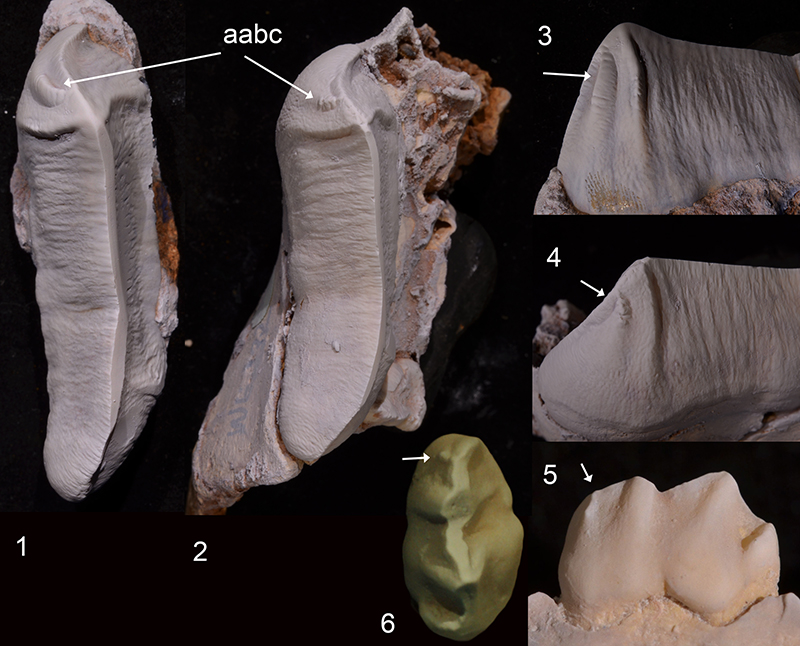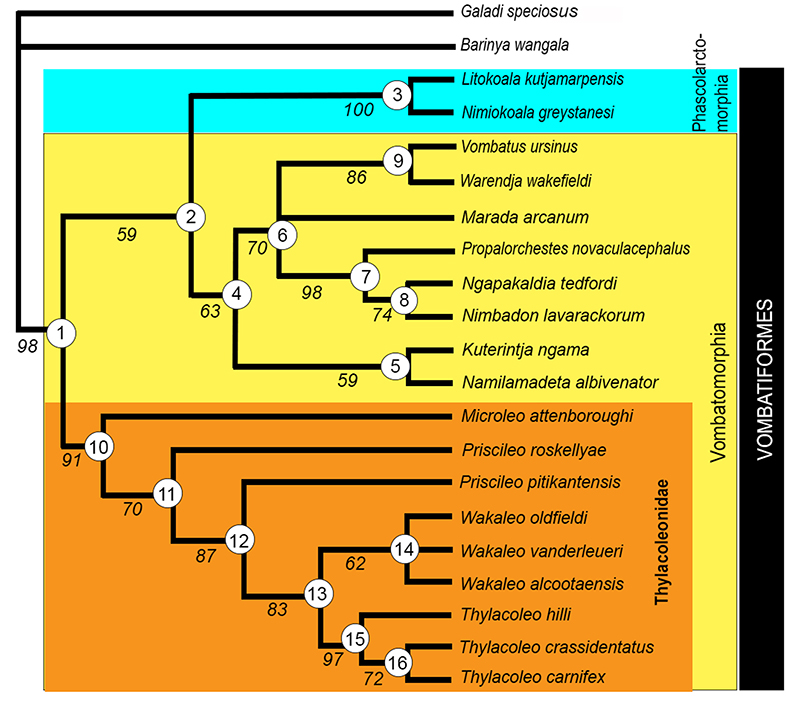FIGURE 1. Microleo attenboroughi n. gen. et sp., Holotype QM F41143: 1) right maxilla and 2) left maxilla in occlusal view, stereo images; 3) interpretive drawing of right maxilla; 4) interpretive drawing of left maxilla. 5) Paratype QM F42676, occlusal views of m3 (stereophotos). Abbreviations: aabc, accessory anterobuccal cusp; ac, anterior cusp; lb, longitudinal blade; mcl, metaconule; mcus, medial cusp; me, metacone; pa, paracone; pc, posterior cusp; pr, protocone.

FIGURE 2. Microleo attenboroughi n. gen. et sp., Holotype QM F41143, right maxilla. 1) buccal view; 2) interpretive drawing in buccal view; 3) lingual view; 4 ) interpretive drawing in lingual view. Abbreviations: aabc, accessory anterobuccal cusp; abc, anterobuccal blade; ac, anterior cusp; alc, anterolingual crest; lb, longitudinal blade; mcl, metaconule; mcus, medial cusp; me, metacone; pa, paracone; pbb, posterobuccal basin; pbc, posterobuccal crest; pc, posterior cusp; plc, posterolingual crest; pr, protocone. Scale bar equals 5 mm.

FIGURE 3. Cladistic relationships of Microleo attenboroughi within Thylacoleonidae and Vombatiformes: 1) strict consensus tree of nine most parsimonious trees obtained in the phylogenetic analysis (tree length = 272 steps; see Appendices 1, 2); 2) time-tree of thylacoleonid phylogeny.

SUPPLEMENTARY FIGURE 1. Accessory anterobuccal cusp development on P3s of Thylacoleo carnifex ( 1-4) and Microleo attenboroughi ( 5, buccal view; 6, occlusal view). In a sample of 14 Thylacoleo carnifex P3s examined in the Australian Museum collection, an anterobuccal cusp was distinct in two specimens: AM F106836 (1, occlusal view; 3, buccal view); and AM F16609 (2, occlusal view; 4, buccal view). However, in T. carnifex premolars exhibiting relatively little wear, a short, broad, gently-rounded swelling was present in this region and in heavily worn specimens the entire anterobuccal surface was smooth which suggests that this feature may be relatively common but obliterated early by wear. Arrows indicate accessory anterobuccal crest (aabc).

SUPPLEMENTARY FIGURE 2. Strict consensus tree of nine most-parsimonious trees obtained from the phylogenetic analysis. Tree length = 272 steps; CI = 0.580, RI = 0.750, RSI = 0.435. Unequivocal apomorphies for nodes (circled) are listed in Appendix 2; bootstrap support values for clades in the consensus tree are indicated in italics (50% majority rule).


